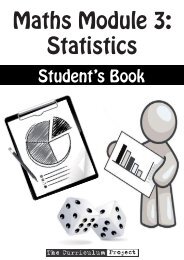Teacher's Guide - The Curriculum Project
Teacher's Guide - The Curriculum Project
Teacher's Guide - The Curriculum Project
- No tags were found...
Create successful ePaper yourself
Turn your PDF publications into a flip-book with our unique Google optimized e-Paper software.
Economic Systems (cont’d)Wealth distribution and economic freedomPre-teach: to minimise (verb): to make as small as possible, controversial (adj): creates a lotof disagreement and argument.Ask students to read through the text about ‘Wealth distribution and economicfreedom’. <strong>The</strong>y should write down any words that they don’t know. Elicit thesewords in turn. Ask if they, or other students, can guess the meaning. If not, givethem a dictionary to look it up and tell the class, or tell them yourself. Also checkthat they understand the meaning of the paragraph.Pre-teach: sector (noun): a part of the economyDiscussion1. Prompt students with questions concerning the different resources and servicesin Burma. <strong>The</strong>re is some information below to help you.Although the private sector in Burma is growing, the majority of economic activity in the country is stillcontrolled by the military government. <strong>The</strong> private sector operates under the many restrictions, and mostsuccessful private companies have very close ties with the regime.Economic Policy: all economic policy decisions are made by the central government, with very little discussionwith / participation of other groups in society.Education: the formal education sector in Burma is very restricted. <strong>The</strong> government is the main provider offormal education in Burma, and all school materials are heavily censored, or function mainly as propagandain favour of the government. Furthermore, education in Burma is not free, despite government claims,meaning that many students cannot afford to attend school. <strong>The</strong>re are some private schools, but theircurriculum is heavily censored, and only the wealthy elite can afford to send their children to them.Natural Resources: the military, companies set up by the military, or conpanies very closely connected to themilitary, and ceasefire groups, sometimes in cooperation with foreign companies control access to themajority of natural resources.Production: the private sector is increasingly involved in production in Burma, but the government stillplays a major role, and only companies with close ties to the military government tend to be successful.Transport: private companies and the government supply transport services. However, many private transportcompanies usually have close ties with the government.Healthcare: the public healthcare system in Burma is very limited and, in most cases, patients must pay fortheir treatment. Informal healthcare and traditional medicine are also available to people, but usuallyrequire some payment. <strong>The</strong>re are some private hospitals but they are only available to wealthy people.Communications: the government has control over all communications networks - telephone (land andmobile), internet etc.... Some private companies do operate with the government in this sector, but underheavily restricted conditionsEnergy: energy generation is controlled by the government. Energy supply is very unreliable to many partsof Burma. Some private companies are involved in the construction of power plants, but the government isthe only energy supplier in the country.Agriculture: Burmese agriculture is dominated by small family farms. Farmers are required to sell a percentageof their harvest to the government at a fixed price. <strong>The</strong> rest of their harvest they are able to sell on the openmarket, and to choose the price themselves. However, the government does impose pricing restrictions on themarket from time to time.Groupwork2. Put the students into groups of 3-5. Check that they understand what theyneed to do. Give them 30 minutes or so to decide on their strategy, fill in thetable, and prepare their arguments. <strong>The</strong>n give each group 3-5 minutes to presenttheir ideas to the class. Make sure they give reasons for their decisions. Allowquestions after each presentation. Note: <strong>The</strong>re are no ‘right’ or ‘wrong’ answersin this exercise. This is about ideas and opinions.<strong>The</strong> <strong>Curriculum</strong> <strong>Project</strong> ECONOMICS: an introduction - Teacher’s <strong>Guide</strong>49



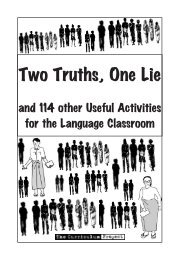
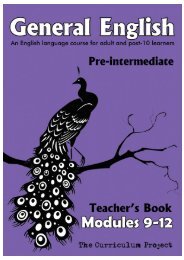
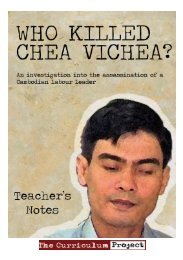



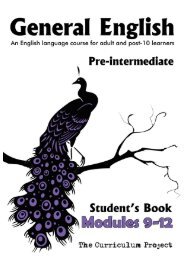

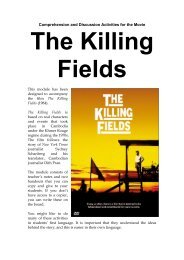
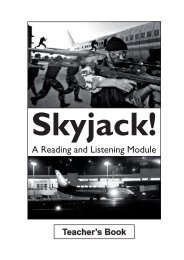
![[Eng] Nov 2012 DRAFT - The Curriculum Project](https://img.yumpu.com/45590859/1/184x260/eng-nov-2012-draft-the-curriculum-project.jpg?quality=85)


